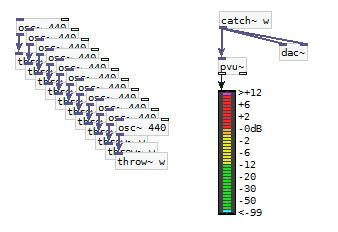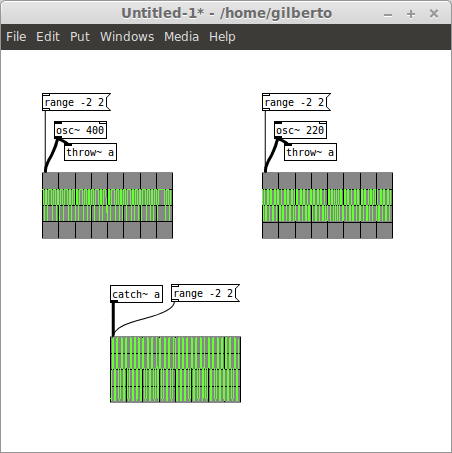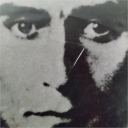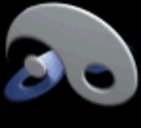does throw~ really sum signals? it says its a "summing bus" in the helpfile. If I throw several dense signals to a signal catch~ it would seem like it would just overload but it doesn't seem to. Can anyone shed light on how this object works?
-
does throw~ really sum signals?
-
in particular is there any need to do something like this:
[throw1~] [throw2~]
\ /
[+~]
[/~ 2]
before the output? or would throw~ combine them just fine as is?b
-
Hi,
I think [catch~] adds signals together from all [throws~] with the same label, similarly to let's say how [dac~] works. So I suppose you'd need to make sure that the output signal is within a healthy range, else you will need some compressor or some sort of division like you say.
Cheers,
Gilberto -
@Coalman as Gilberto says....... you still need to be careful with your levels......
David.

-
Take a look at this:

All [Scope~] objetcs are ranging from -2 to 2 in the example above. Each individual oscillator outputs signals between -1 and 1, and after the [catch~] the output is between -2 and 2.
-
ah ok...clear...great demo @gsagostinho, thanks a lot. I think what I will do is manage all the volumes before the throw~ objects rather than do some signal maths afterwards.
-
Correct me if I'm wrong, but doesn't any line-level object sum its signal inputs?
-
that is what I thought, but then I saw some patches where people had used [+~] prior to [throw~] so I wasn't sure how it was working. After all, couldn't you just as easily throw~ both signals and then have [catch~] sum them? that was the nature of my original question.
of course [/~] or [-~] don't sum their signal inputs sorry, I couldnt resist that
sorry, I couldnt resist that -
I think often people use [+~] before another signal object just for the sake of clarity. As @LiamG wrote, that's often not necessary, but sometimes it makes the patch clearer I believe.




